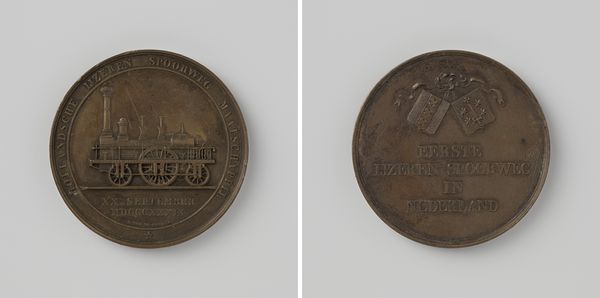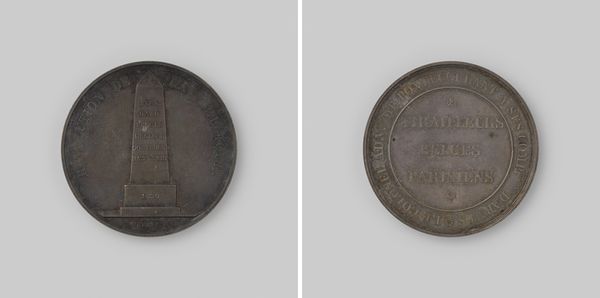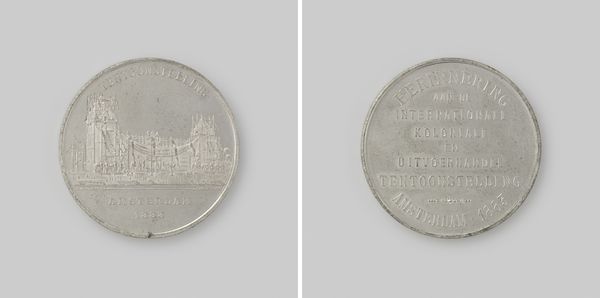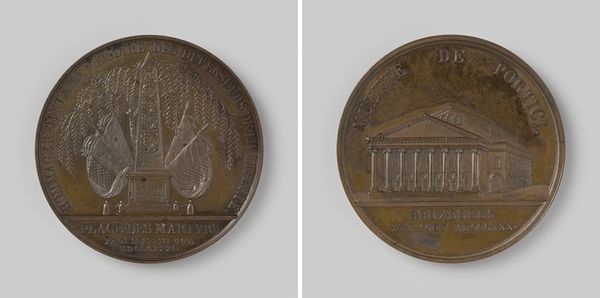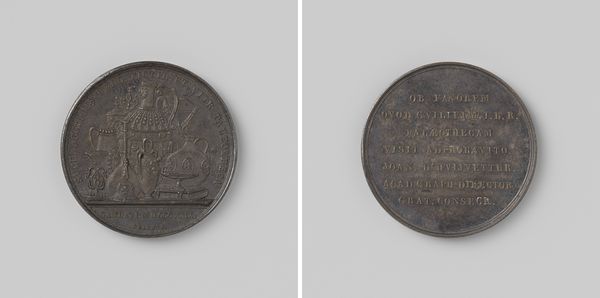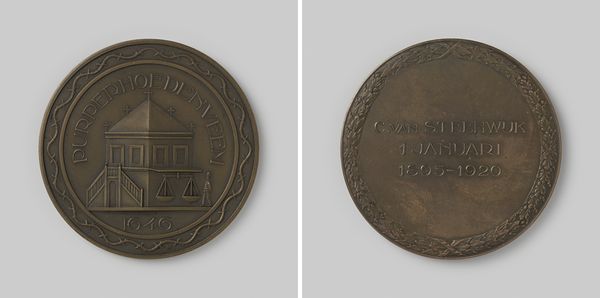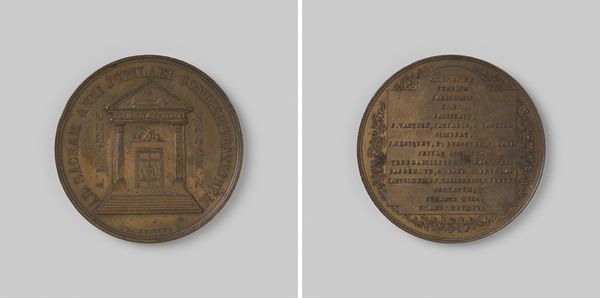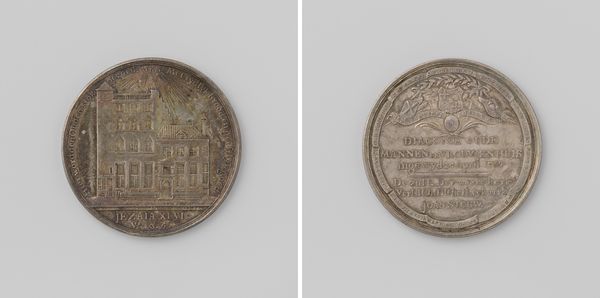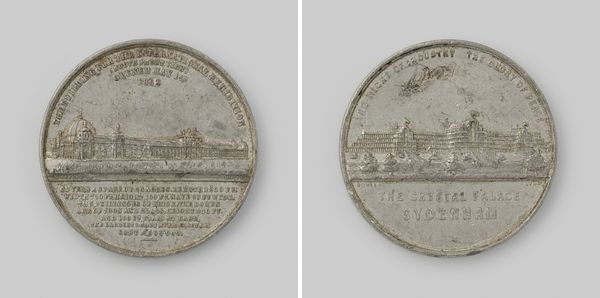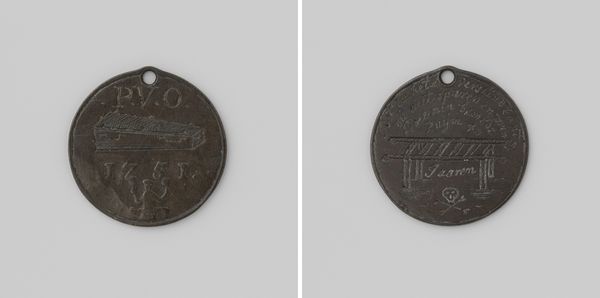
Opening van de spoorweg Amsterdam-Haarlem, de eerste spoorlijn in Nederland van de Hollandsche IJzeren Spoorweg Maatschappij 1839
0:00
0:00
print, metal, engraving
#
medal
#
neoclacissism
# print
#
metal
#
landscape
#
ceramic
#
history-painting
#
engraving
Dimensions: diameter 4.2 cm, weight 20.19 gr
Copyright: Rijks Museum: Open Domain
Curator: Here we have a fascinating object—a commemorative medal by Pierre Wautier van de Goor, celebrating the opening of the first railway line in the Netherlands. The engraving on metal, dated 1839, captures a pivotal moment in Dutch history. Editor: It's quite austere, isn't it? The limited color palette and the sharp lines of the train give it a rather mechanical and serious feel. A bit somber, perhaps, for such a celebratory occasion. Curator: It's reflective of its time! Think of the societal shift; new labor opportunities in industry would inevitably change the structure of how people lived. Look at how precisely the locomotive is rendered, dominating one side. On the flip side there's a coat of arms to symbolize how proud people felt. Editor: That makes sense. So it's not just about the event itself but also about how technological advancements impact and re-shape identity? It reflects the era's fascination with industry, and its integration into Dutch identity through the coats of arms on the reverse, legitimizing its historical and political relevance. Were the railroad workers ever portrayed this way? Curator: Precisely. It is intriguing how it elevates progress while eliding the realities of production. The industrial labor that went into building the railway, the raw materials sourced...these medals are often quite selective in what narratives they foreground. Who actually benefited and at what cost, versus the image of unified prosperity it presents? That’s why looking at who benefits and who is omitted becomes so vital when approaching historical objects. Editor: Yes, it’s easy to forget the often exploitative labor practices behind grand displays of progress. Looking at this medal now, through that lens, definitely makes it a more complex and nuanced piece. It shows an official narrative, which helps to examine things from the opposite side of power too. Curator: Absolutely. These objects serve as excellent starting points for larger conversations. Editor: Indeed—a tiny piece with enormous stories embedded in it.
Comments
No comments
Be the first to comment and join the conversation on the ultimate creative platform.
